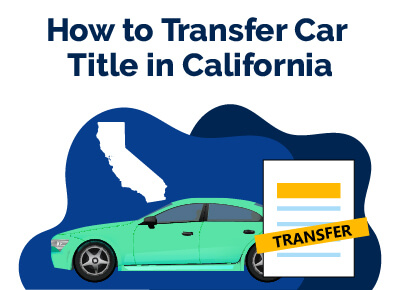How To Transfer Car Title in California
July 22, 2023


Chris is Head of Content for FindTheBestCarPrice and is based out of Philadelphia, PA. As a seasoned automotive industry analyst and car enthusiast, he ensures the highest level of quality across all our content and curates our picks for the best deals each month.
Chris studied information systems and marketing at Drexel University and writes about a wide range of topics ranging from car buying tips to troubleshooting common mechanical issues.
When he’s not thinking about cars, he likes to stay in with his dog and make an “attempt” to finish a crossword puzzle (he’s not quite at the Saturday/Sunday level…yet). As a former cheesemonger, Chris still has a “sharp” passion for all things cheese, and his fridge is always loaded with it!
Chris also has a passion for things that go fast, and drones are no exception. He spends some of his time writing for Dronesourced.
Navigating the process of car title transfer is crucial for anyone involved in buying or selling a vehicle in California.
This legal procedure, which documents the change of ownership, is obligatory following the sale, donation, or gifting of a vehicle.
Car title transfers in California are necessary for cases of inheritance or when applying for a lien.
The process to transfer a car title in California involves submitting an application, completing registration formalities, managing the necessary paperwork, settling any applicable fees, and signing off on the required forms.
The specifics of these steps vary based on the nature of the transfer, whether it's a transaction between private parties, within family members, from an individual to an estate, from a deceased owner to an heir, or concerning a vessel transfer.
This guide aims to demystify the car title transfer process in California, providing you with the knowledge to smoothly execute this critical task.
Table of Contents
- What Does It Mean To Transfer Car Title in California?
- What Happens if You Don’t Transfer a Title Within 30 Days in California?
- What Is Needed To Transfer Car Title in California?
- How To Transfer Car Title in California
- How Do I Transfer a Car Title to Family Members in California?
- How Do I Transfer a Car Title to an Estate in California?
- How Do I Transfer a Car Title as a Form of Inheritance in California?
- Conclusion
- Best Car Deals by Category
- Frequently Asked Questions
What Does It Mean To Transfer Car Title in California?
Car title transfer involves the process of transferring ownership between a seller to a buyer after the car is bought.
However, you must understand that transferring a car title is not limited to only when cars are bought between a buyer, dealer, or another private owner.
Here are other scenarios that will require a car title transfer in California:
- Car sales between a buyer and seller
- Car transfer between family members
- When cars are transferred from an individual to an estate
- Vehicle transfer from a deceased owner to an heir (without probate)
- In the event of transferring a vessel
As a matter of urgency, California laws mandate that all title transfers must be done within 10 days after the change of ownership of a vehicle or vessel with the registered owner or lienholder.
What Happens if You Don’t Transfer a Title Within 30 Days in California?
The Department of Motor Vehicles, California, mandates that all transfer of titles must be done within 10 days of purchase. You will attract a penalty and accrue fees if you don’t transfer a title within 30 days in California.
In California, 30 days from the transaction date is too long for you not to have transferred the title.
What Is Needed To Transfer Car Title in California?
Before we proceed with showing you how to transfer a car title in California, you must be aware of the requirements for transferring a car title in California.
Here’s a list of requirements that you need to transfer car titles in California:
- Transfer fees
- Certificate of title
- Signature(s) of buyers and sellers
- Declaration of Gross Vehicle Weight (GVW)/Combined Gross Vehicle Weight (CGW) (REG 4008)
- Bill of Sale
- Lien Satisfied/Title Holder Release (REG 166)
- Application for Replacement or Transfer of Title (REG 227)
- Notice of Transfer and Release of Liability
- Statement of Facts (REG 256)
- Smog certification
- Vehicle Emission System Statement (Smog) (REG 139)
- Affidavit for Transfer without Probate (REG 5)
- Verification of Vehicle (REG 31)
These requirements vary depending on the circumstances surrounding your California car title transfer.
To ensure that you are adequately equipped with relevant information, we will show you how to transfer a car title for:
- An Individual Buyer/Seller
- To Family Members
- To an Estate
- As a form of Inheritance
- From a Deceased Owner to an Heir
How To Transfer Car Title in California
Here are easy steps for transferring a car title to someone else, especially in the case of a buyer and a seller:
1. Clear Title
As a buyer, during a car title transfer in California, you must ensure that you have a clear title. All parties involved in the transaction (buyer, seller, or lienholder, if applicable) must sign on the title.
The dealer or seller should handle all the paperwork, pay off the lien, and get a lien release if there’s a lien holder. All you have to do is to wait for the title to be mailed to you by the Department of Motor Vehicles, California.
If the title is clear and available, the seller can sign the title to release vehicle ownership, and you (the buyer) can take the signed title to any DMV office near you to apply for a transfer of ownership.
2. Application
If you don’t have the title, an application for replacement or transfer of Title must be filled out to initiate a transfer of ownership. The application for replacement or transfer of title documents records of the registered owner(s), the legal owner(lien), and states interests for transfer.
This will be included with an odometer mileage reading disclosure, except if the vehicle is:
- Up to 10 years or older
- A commercial vehicle with a gross vehicle weight (GVW) or combined gross vehicle weight (CGW) of 16,000 pounds
- A new vehicle with a title transfer prior to its first retail sale by a dealer
The application will cover many details about the parties involved, like name, street address, signature, license plate number, vehicle make, model and year, VIN, date of transfer, and purchase price.
3. Documentation
You will need to provide documents that will aid your car title transfer.
Some of the documents that you will need to transfer a car title in California include:
- Bill of Sale
- Vehicle Emission System Statement (Smog) (REG 139), after smog inspection if applicable
- Notice of Transfer and Release of Liability
- Lien Satisfied/Title Holder Release (REG 166), if applicable
The Notice of Transfer and Release of Liability will be submitted within 5 days of releasing ownership of the vehicle. If the proposed vehicle has been sold more than with the same title, all sellers involved must provide a REG 262.
4. Tax and Fees
The fees that you are required to pay for a California car title transfer depend on a lot of factors:
- Is the vehicle a gift, purchase, or family transfer?
- The purchase price and declared value of the vehicle
- County, the city you live in/area of application
- Type of vehicle
- Does the vehicle have any special license plate?
- Any violations, unpaid parking, toll evasion bail?
- Overall GVW and CGW of the vehicle
To get an actual figure, you must use the DMV fees calculator to calculate how much it will cost to get a title in California. This includes the tax and charges.
However, you should know that some of the fees that you will have to pay to transfer your car title in California include:
- Registration fee
- Vehicle license fee
- Transportation improvement fee
- County or district fee
- California highway patrol fee
Upon completion of payment and receipt of your documents, your title transfer request will be processed in 30 days.
How Do I Transfer a Car Title to Family Members in California?
The process of transferring car titles to family members in California is slightly similar to title transfer between buyers and sellers. The major difference lies in the documents that are required.
To transfer a car title to your family members, you will need the following documents:
- Statement of Facts (REG 256)
- Odometer Disclosure
- Transfer Fee
It is important to mention that the vehicle's registered owner(s) must sign and endorse the Certificate of Title on the first line of the title, while details of the new owner are filled and signed on the back of the title.
How Do I Transfer a Car Title to an Estate in California?
You'll need to submit similar documents to transfer a car title to an estate without signatures on the title, except that there is no need for an odometer disclosure, tax, and smog certification.
Here are the documents that you will need to submit to transfer a car title to an Estate in California:
- Certificate of Title
- Statement of Facts
- Transfer Fee
The statement of facts will confirm that the vehicle's legal owner is deceased and that there was no issuance of Letters of Testamentary. The applicant or whosoever is filling out the statement must clearly state their relationship with the deceased.
How Do I Transfer a Car Title as a Form of Inheritance in California?
Certain levels of technicalities are involved in the transfer of car title as a form of inheritance, especially without probate.
Here are certain requirements that must be met to transfer a car title as a form of inheritance in California:
- Car title transfer is done 40 days after the legal owner’s death
- The value of the deceased property in California is not more than $150,000 before 1/1/20 and $166,250 on or after 1/1/20.
If these conditions are met, follow these steps to transfer the car title from the deceased to an heir as a form of inheritance:
- Signing of certificate of title
The heir that should inherit the car title must sign the deceased registered name and countersign it on line 1. The heir must also complete and sign the back of the title.
- Completion and signing of affidavit for transfer without probate by the heir
- An original copy of the death certificate of the deceased must be provided
- An odometer reading disclosure if the vehicle is less than 10 years
- Payment of title transfer fees
Conclusion
Transferring a car title in California isn’t an entirely hard process. There are no electronic title transfers in California, as seen in Arizona.
Still, you will need to understand how the process works and ensure that you don’t skip a requirement, as this can affect the success of your title transfer application.
Best Car Deals by Category
Frequently Asked Questions
How much does it cost to transfer a car title in California?
Transferring a car title in California costs $15, and out-of-state vehicles will pay $20. Drivers and vehicle owners in California have a 30-day timeframe to complete their title transfers to avoid attracting penalties.
How long does it take to transfer a car title in California?
Processing of car title transfers in California is done within 30 days. You should expect to receive your transferred car title within 15 - 30 days from your application and submission date.
Can I drive my car while waiting for a title transfer in California?
Yes. You can drive your car in California while waiting for your title transfer. This is as long as you have done registration and acquired your license plates. To stay on the safer side of the law, you can get a temporary permit from the dealer, department of motor vehicles, California, to permit you to drive your car while you wait for the title to arrive.
Posted in Car Buying Tips, Car Troubleshooting |




